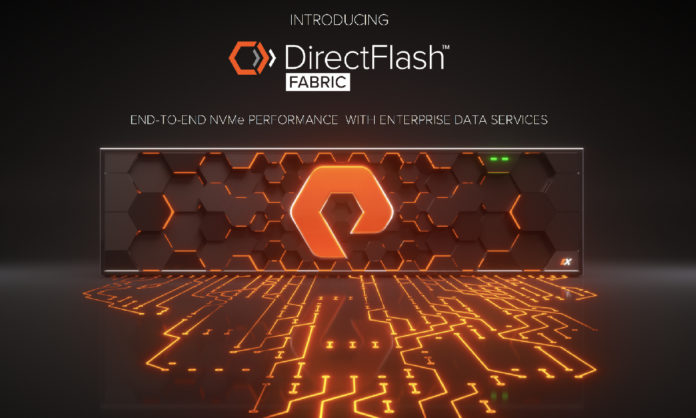Pure Storage has a potential humungous hyperscale opportunity in front of it, with a startling 600PB footprint possibility at Meta, plus more at Azure using Equinix colo-resident Pure arrays for EDA work.
This comes from modelling by Wells Fargo analyst Aron Rakers who’s been poring over Pure numbers for his subscribers. We learnt about Pure’s adoption by Meta (Facebook as was) in January with a phase 1 total of 175PB of Flash Array and 10PB of FlashBlade storage capacity. Phase 2 is underway, and during this 2022 year Meta will grow its AI Research SuperCluster (RSC) storage to exabyte-level capacity.
Taken literally at 1EB that gives Pure an 875PB opportunity. Rakers views it differently: “We would estimate Pure’s potential capacity opportunity in the ~600PB range for going forward, which compares to the company estimated to have shipped ~1.86EB of total storage capacity in 2021, according to Gartner. Put simply, we think Pure has a much broader opportunity from the Meta AI RSC deployment looking forward.”
Pure also won a deal with Azure and Equinix back in November for FlashBlade unified file+object storage placed in Equinix co-location centers with a high-speed, low-latency connection to Azure datacenters for EDA, HPC and other highly parallel workloads. That’s two hyperscaler customers for Pure.
Rakers thinks “there is an increasing potential that the company could see additional hyperscale opportunities.” He quotes Pure CEO Charles Giancarlo answering analyst questions in the Q4 2022 earnings call: “It’s a little bit difficult to predict the exact timing, but we [Pure] do have conversations ongoing. It’s certainly my expectation, but I can’t say that it’s near-term. But 12 months is a long-time … I hope to have an update there; it’s definitely of strategic importance to the company overall.”
After talking to various people Rakers thinks “Pure is engaged in discussions with a couple of the other large hyperscale cloud companies on potential future projects involving all-Flash storage deployments.” That’s two more.
Rakers suggests that hyperscaler customers could be finding that the scale-out requirements of AI infrastructure and high-performance computing workloads mean they have to use all-flash arrays instead of hybrid or all-disk arrays for large capacity primary data storage.
The other all-flash array suppliers will be wondering why exactly Pure was chosen instead of, for example, industry leaders Dell EMC and NetApp. Particularly NetApp, which has a good public cloud presence with Azure NetApp Files.
We can’t realistically expect Pure to scoop up every hyperscalers all-flash array opportunity. But, if these prospects in front of Pure turn out to be real and are of a similar size to Meta, then Pure’s hyperscale opportunity is, well, literally hyperscale in scope.








